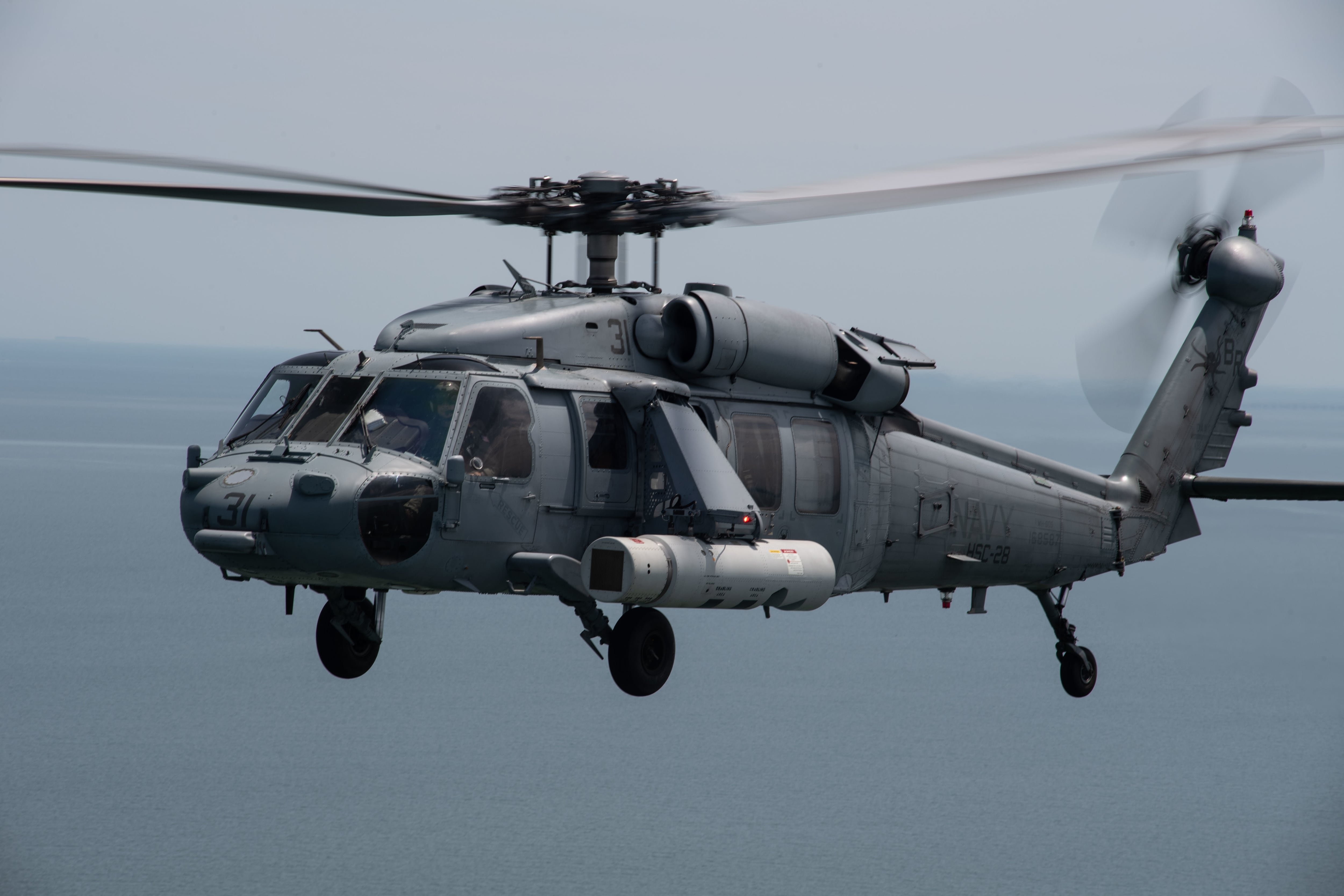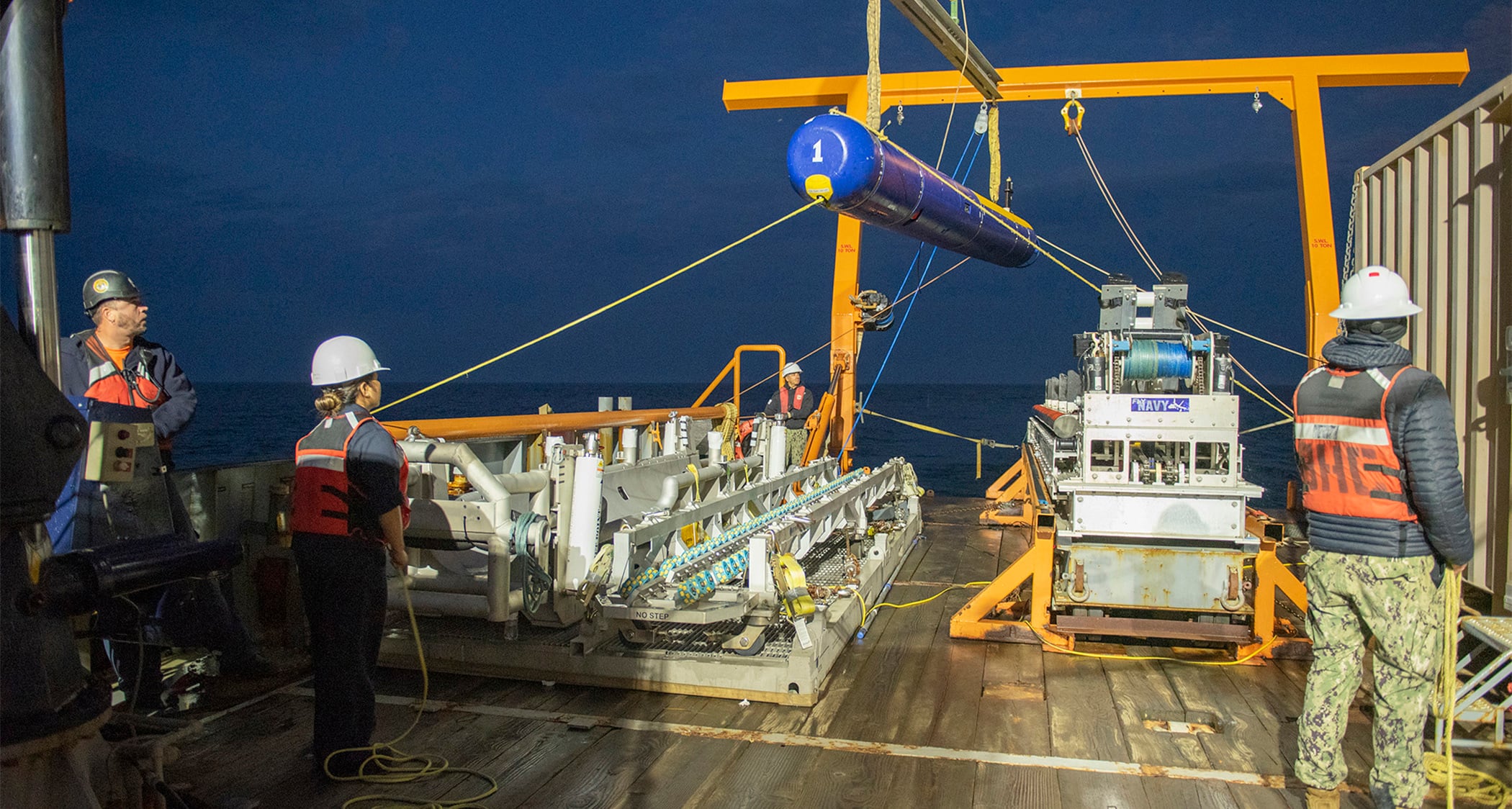ARLINGTON, Va. — The U.S. Navy is close to declaring initial operational capability on its second and final Littoral Combat Ship mission package, the mine countermeasures package, as it awaits a final report from the service’s test and evaluation office.
The sea service has individually tested each of the six pieces of equipment in the mission package and also conducted a full-package operational test in August, where sailors aboard LCS Cincinnati demonstrated the entire detect-to-engage kill chain, officials at the Program Executive Office for Unmanned and Small Combatants said this week at an American Society of Naval Engineers conference here.
“We are officially done with testing for now,” PEO USC mine warfare senior leader Sam Taylor told Defense News after a panel presentation. “We’re ready to push it out the door.”
Since the August test, the PEO has continued to work on fleet familiarization efforts, Taylor said. The Navy’s Operational Test and Evaluation Force continues to analyze the test results and should have a final report to present to Navy leadership soon, he said.
“Once that report comes out, it will be any day after that report” that Director of Expeditionary Warfare (OPNAV N95) Brig. Gen. Marcus Annibale will likely declare IOC, Taylor told Defense News.
Declaring IOC for the LCS mine countermeasures mission package is an key step because the Navy is prevented by law from decommissioning its 1980s-era MCM ships and helicopters until a sufficient replacement is fielded.
Taylor told Defense News that, once the Navy declares initial operational capability on the mission package, the equipment will go out to the fleet for familiarization and training. When fleet leaders are satisfied they understand the equipment and can use it to reliably find and destroy mines in the water, the Navy will certify the new systems and allow decommissioning of the old systems to begin.
Taylor said the PEO has little control over that timing, saying “we basically drive the delivery of systems, and the fleet decides when and where and how.”

Rear Adm. Casey Moton, who leads PEO USC, told Defense News at the conference all MCM mission package testing has been done with fleet sailors and, throughout that process, the PEO has discovered areas of insufficient training. Over the past year and a half, the office has refined its training plans so the fleet familiarization phase can progress quickly and the Navy can feel comfortable transitioning from the legacy MCM systems to the new mission package.
The MCM mission package, originally developed to be employed from both LCS variants but now planned for deployment just on the Independence LCS, includes six separate systems.
From the air, sailors can employ the Airborne Laser Mine Detection System, the Airborne Mine Neutralization System and the Coastal Battlefield Reconnaissance and Analysis system via the MH-60 helicopter and MQ-8 Fire Scout unmanned aerial vehicle.
In the water, sailors use the Knifefish mine-hunting unmanned underwater system, the Unmanned Influence Sweep System towed mine sweep, and the AN/AQS-20C towed mine hunting sonar. The latter two are towed from the same MCM Unmanned Surface Vehicle, which Moton said had some reliability problems the Navy has since fixed.
The Navy also separately fields a surface warfare mission package on the LCS. The service canceled a third package, for anti-submarine warfare, last year.

An annual report from the Pentagon’s Director of Operational Test and Evaluation, released Jan. 20, noted the Unmanned Influence Sweep System’s “reliability and availability do not support sustained mine sweeping operations. Operational availability demonstrated when employing UISS from an LCS was 0.29, well below the Navy-defined minimum threshold.”
The DOT&E report lists an August 2022 test date, which would have been the full mission package test event. Just prior to that test, the Navy declared initial operational capability on the UISS system, the first time the Navy has ever reached IOC for an unmanned surface vessel.
Moton said the Navy was aware of these reliability concerns when it conducted the UISS-only operational testing in May and June 2021. Following that testing, the Navy identified a number of issues, briefed a corrective action plan to Navy leadership and made changes to the Textron-built USVs that were in the water for testing.
However, the Navy decided in April 2022 Textron would not build the USVs that will deploy around the world with LCSs. Instead, the service selected Bollinger Shipyards in Louisiana to take over the MCM USV program.
“All the tests to date have so far been Textron-produced vehicles,” Moton said. The reliability issues noted in the DOT&E report “were, for the most part, tied to vehicle design aspects. … What we have done is not only fixed the vehicle we tested, but we developed [engineering change proposal] packages for all of those fixes, and those fixes are being applied to the Bollinger vehicles at the start of the production line.”
He noted that, during the last test in September for the towed mine hunting system, the fixes were already in place on the Textron-made test USV and “we saw a marked improvement and we did not see any significant repeats” of the deficiencies DOT&E discovered.
Megan Eckstein is the naval warfare reporter at Defense News. She has covered military news since 2009, with a focus on U.S. Navy and Marine Corps operations, acquisition programs and budgets. She has reported from four geographic fleets and is happiest when she’s filing stories from a ship. Megan is a University of Maryland alumna.





